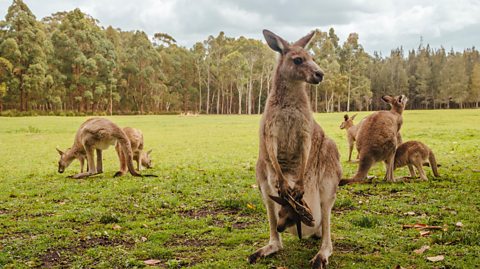Africa: The second-driest inhabited continent on the planet contains an abundance of wildlife.
So here we are with the last episode of Seven Worlds, One Planet, which has showcased some of the wildlife and ecosystems of: Antarctica, Asia, South America, Australia, Europe and North America.
Now itÔÇÖs time to explore a continent, home to the famous pyramids of Egypt and subject of TotoÔÇÖs 1982 pop hit. Africa is the last continent in the Seven Worlds, One Planet collection. We take you through some of the continentÔÇÖs prized animals and landscapes, starting with one we hope ivory-body will enjoy.
Big trunks and African shaped ears
If you want to learn more about the largest animal that walks the Earth, then this article is rele-phant. Of course we are talking about elephants African elephants to be precise, the ones with ears the same shape as the continent they live in.
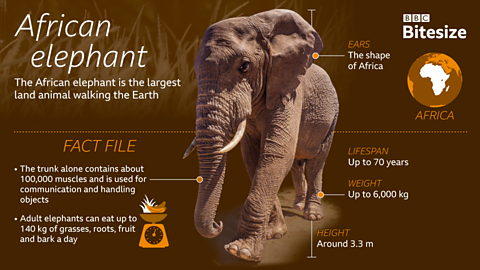
These huge creatures are herbivores, and they have some well-equipped tools up their sleeve to help them survive. Their big ears regulate heat to help keep them cool, and use their trunks for eating, drinking, breathing and grabbing objects. Their trunks are also used to suck up water and spray themselves, kind of like a do-it-yourself shower, which they love. Afterwards, they cover themselves with with dust and sand, which acts as a layer of sunscreen and insect repellent.
They have strong tusks that are used to dig for food and strip bark from trees, males also use these tusks when battling each other. However, elephant tusks are made of ivory, a material, which is valuable in some cultures. This leads to around 20,000 elephants being killed each year and their tusks being sold illegally around the world, especially in some parts of Asia.
The mountains of the East African rift
The East African rift features some of AfricaÔÇÖs most iconic landmarks including Mount Kilimanjaro and the Ol Doinyo Lengai volcano in Tanzania. At around 6,400 km (4000 mi) long, the East African rift is one of the most extensive rifts on Earth. The rift stretches from southeast Asia downwards through east Africa to Mozambique and first began forming around 30 million years ago.
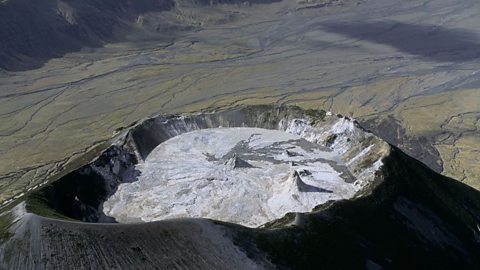
Known as the ÔÇÿMountain of GodÔÇÖ by the local Masaai people, Ol Doinyo Lengai is the only known active volcano that produces lava, rich with a type of rock called carbonatite. The lava resembles washing up liquid and can flow quicker than we can run. In 2007, the volcano emitted ash that extended at least 17 km (11 mi).
Ol Doinyo LengaiÔÇÖs lava is responsible for the Engare Sero site, where human footprints dating back between 5,000 - 19,000 years ago have been preserved. Some geologists think that mud-rich ash containing the footprints washed down the volcano and formed mudflats. Experts think that the mudflats dried out, preserving the footprints in the process. Another flow of debris then buried the footsteps for thousands of years until a local villager discovered them in 2006.
The scaly anteaters
Whilst youÔÇÖre reading this article, take a moment to have a look at your fingernails. You may be wondering why, but they are linked to pangolins more than you might think. ThatÔÇÖs because pangolins are the only animal to be covered in keratin scales, the same material as human fingernails.

These scales are what makes them unique, but also one of the main reasons they are at risk of extinction. These shy, timid creatures are illegally hunted for their scales and meat, which is considered a delicacy in some countries, making them the most trafficked animal in the world. It is believed by conservation groups that over a million pangolins have been illegally captured from the wild in the past 10 years.
There is hope for the ÔÇÿscaly anteaterÔÇÖ as an international agreement in 2016 saw over 180 countries ban the trade of pangolins. Despite this, illegal hunting is still a problem and every pangolin species is at risk of extinction.
AfricaÔÇÖs diverse deserts
Africa is the second-driest inhabited continent after Australia and as such, provides some varied deserts. Believed by many geologists to be the oldest desert in the world, the Namib in Southern Africa was created more than 55 million years ago. Life is sparse in some areas of the desert but flourishes in others. One plant, the welwitschia is found exclusively in the centre of the desert and can live for around 1,000 years by gathering moisture that blows inland from the sea.
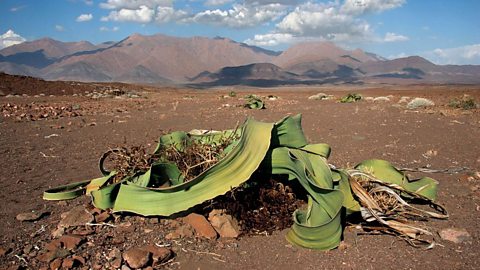
To the east of the Namib desert is the Kalahari, the second-biggest in the continent after the Sahara. The northeastern part of the desert receives much more rainfall annually and therefore doesnt qualify as a desert. However, the surface is lacking almost completely in water because rain drains very quickly through the deep sand. This northern area of the Kalahari is home to an array of wildlife including a very quick wildcat covered in spots
The worldÔÇÖs fastest land animal
Some of us like to think weÔÇÖre fast. Usain Bolt is pretty quick and horses in the Grand National are even quicker but none are faster than the fastest land animal, the cheetah. The fast cats regularly reach speeds of 80 - 100 kmh (50 - 62 mph) when chasing prey, but cheetah sprints have been recorded sprinting at 114 kmh (71 mph), faster than the UKÔÇÖs national speed limit on the roads.
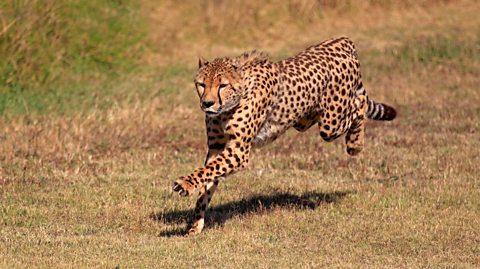
Cheetahs were once found throughout North America, Asia and Europe until the end of the last ice age around 11,000 years ago. Nowadays almost all wild cheetahs are found in Africa. Cheetahs use their speed to catch prey of small animals including rabbits, game birds and antelopes. They have speed but they are not as big as other wild cats like lions. As such, they will eat their prey quickly to avoid losing it to larger competitors.
North America: A land of pioneering animals
Is a roadrunner quicker than a coyote? Which insect glows in the night? Find out more about North America's wildlife.

Europe: The continent transformed by humanity
Find out more about a continent where wildlife and over 700 million humans live together.
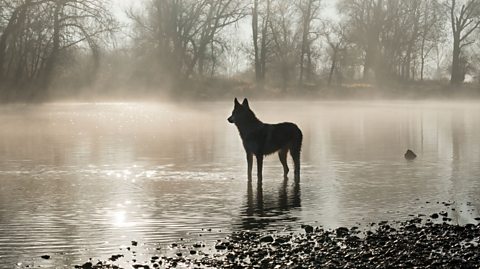
Australia: The land down under
From hopping kangaroo to beautiful reefs, we take a look at some of Australia's wildlife and natural wonders.
